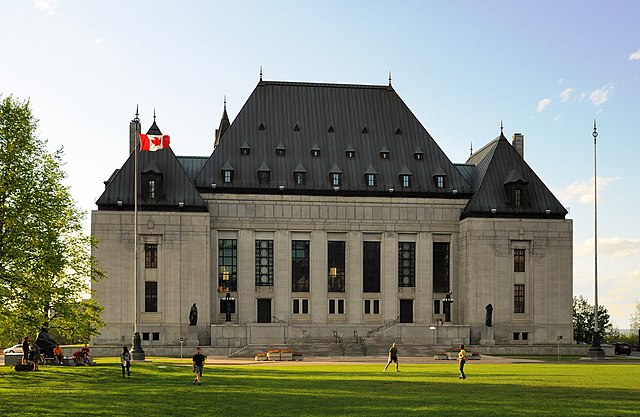Canadian Charter of Rights and Freedoms
The Canadian Charter of Rights and Freedoms, often simply referred to as the Charter in Canada, is a bill of rights entrenched in the Constitution of Canada, forming the first part of the Constitution Act, 1982. The Charter guarantees certain political rights to Canadian citizens and civil rights of everyone in Canada from the policies and actions of all governments in Canada. It is designed to unify Canadians around a set of principles that embody those rights. The Charter was proclaimed in force by Queen Elizabeth II of Canada on April 17, 1982, as part of the Constitution Act, 1982.
English language version of the Charter
Printed copies of the Canadian Charter of Rights and Freedoms
Prime Minister Pierre Trudeau was a major advocate of the Charter.
The building of the Supreme Court of Canada, the chief authority on the interpretation of the Charter
The Constitution of Canada is the supreme law in Canada. It outlines Canada's system of government and the civil and human rights of those who are citizens of Canada and non-citizens in Canada. Its contents are an amalgamation of various codified acts, treaties between the Crown and Indigenous Peoples, uncodified traditions and conventions. Canada is one of the oldest constitutional monarchies in the world.
A painting depicting negotiations that would lead to the enactment of the British North America Act, 1867





